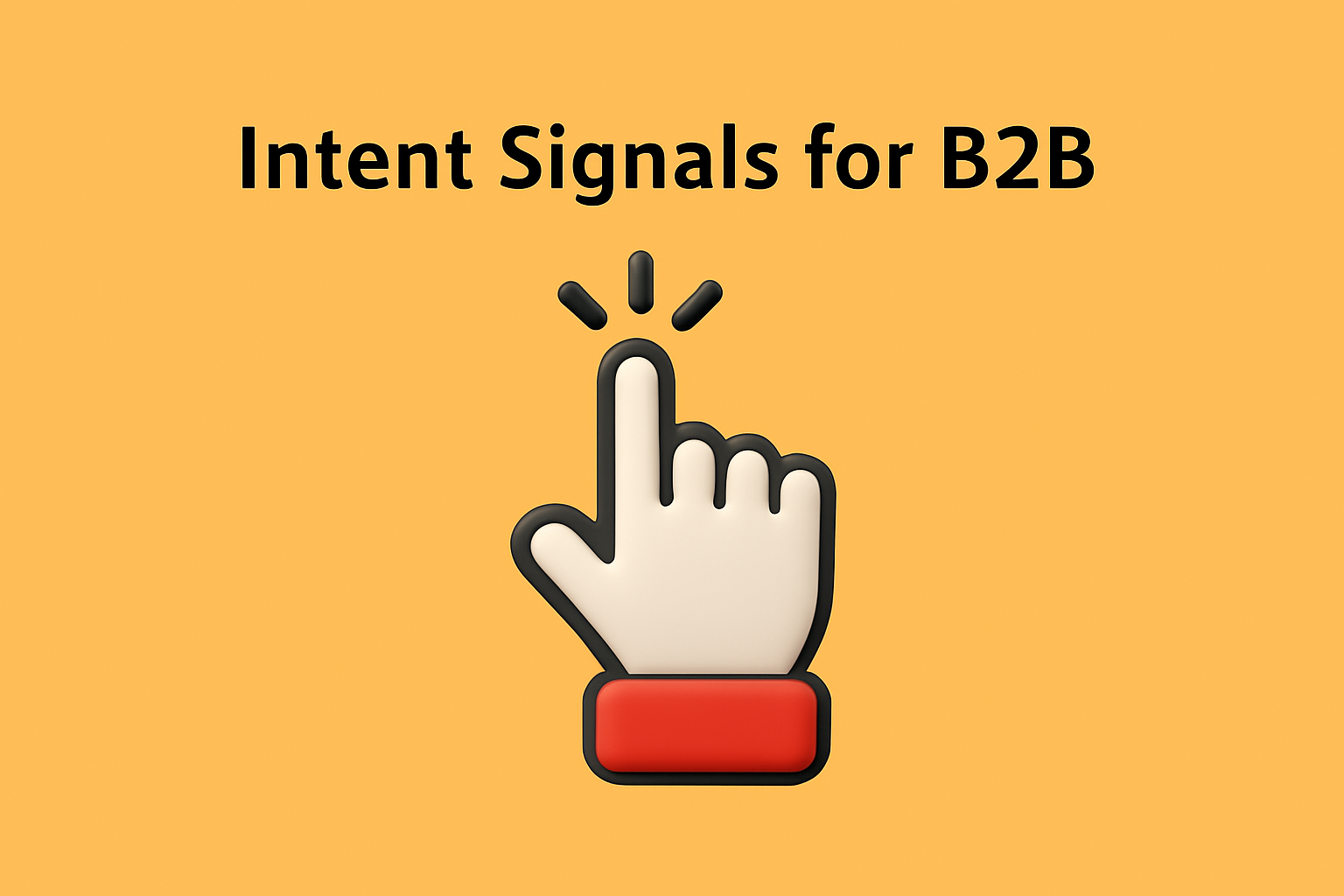Why B2B Beats B2C in Social Media Marketing
The Changing Dynamics of Social Media
Most marketers assumed B2C marketing naturally performed better on social media because consumers are active, emotional, and engaged. But the emergence of platforms like LinkedIn, the rise of niche communities, and the growing influence of thought leadership have changed the rules.
B2B brands no longer play catch-up—they’re leading the game.
And here’s why.
Why B2B Beats B2C in Social Media Marketing
1. Targeted and High-Intent Audiences
B2B social media audiences are more focused, professional, and solution-driven.
Platforms like LinkedIn allow precise targeting based on industry, job title, company size, and skills.
Every engagement—like a comment, case study download, or event registration—signals clear intent.
Unlike B2C, where the audience scrolls for entertainment, B2B targets decision-makers who actively seek solutions, making conversions far more valuable.
2. Strong Thought Leadership Opportunities
B2B brands thrive on expertise, insights, and education.
Social media amplifies thought leadership through:
Expert posts
Industry commentary
Webinars
Whitepapers
Founder-led content
Buyers trust experts more than advertisements.
This gives B2B brands an edge, as consistent thought leadership builds authority and long-term loyalty—something B2C struggles to maintain unless it constantly spends on trends or influencers.
3. Higher ROI With More Sustainable Content
B2B content such as case studies, reports, infographics, and explainers offers long-term value.
Unlike B2C’s short-lived meme or trend-based strategy, B2B content gets re-shared and repurposed for months.
Result: higher ROI, lower content fatigue, and more meaningful engagement.
4. Relationship-Driven Engagement
B2B purchasing involves multiple decision-makers, long sales cycles, and continuous trust-building.
Social media platforms help brands nurture long-form relationships through:
Community groups
Personalized messages
Comment-based discussions
Educational content
In contrast, B2C interactions are quick, emotional, and easily forgotten.
B2B thrives because relationships—not impulse—drive conversions.
5. Better Analytics and Measurable Outcomes
B2B campaigns rely on clear metrics:
Lead quality
Conversion rates
Content engagement
Pipeline influence
Social media platforms now offer deep analytics that help B2B brands measure outcomes with precision.
B2C metrics often revolve around likes, impressions, and vanity numbers, which rarely reflect actual business impact.
6. Professional Networking Platforms Give B2B an Advantage
LinkedIn, X (formerly Twitter), and industry forums offer targeted communities ideal for B2B engagement.
These platforms naturally filter out irrelevant audiences, making every interaction more meaningful.
Meanwhile, B2C brands must fight for visibility on entertainment-driven platforms like Instagram or TikTok, where competition is endless.
Examples of B2B Success on Social Media
1. LinkedIn Thought Leadership
CEOs, founders, and product leaders sharing industry insights often generate massive traction—more than many B2C influencer posts.
know more.
Hashtags
#B2BMarketing #SocialMediaStrategy #DigitalBranding #ThoughtLeadership #MarketingTrends
The Changing Dynamics of Social Media
Most marketers assumed B2C marketing naturally performed better on social media because consumers are active, emotional, and engaged. But the emergence of platforms like LinkedIn, the rise of niche communities, and the growing influence of thought leadership have changed the rules.
B2B brands no longer play catch-up—they’re leading the game.
And here’s why.
Why B2B Beats B2C in Social Media Marketing
1. Targeted and High-Intent Audiences
B2B social media audiences are more focused, professional, and solution-driven.
Platforms like LinkedIn allow precise targeting based on industry, job title, company size, and skills.
Every engagement—like a comment, case study download, or event registration—signals clear intent.
Unlike B2C, where the audience scrolls for entertainment, B2B targets decision-makers who actively seek solutions, making conversions far more valuable.
2. Strong Thought Leadership Opportunities
B2B brands thrive on expertise, insights, and education.
Social media amplifies thought leadership through:
Expert posts
Industry commentary
Webinars
Whitepapers
Founder-led content
Buyers trust experts more than advertisements.
This gives B2B brands an edge, as consistent thought leadership builds authority and long-term loyalty—something B2C struggles to maintain unless it constantly spends on trends or influencers.
3. Higher ROI With More Sustainable Content
B2B content such as case studies, reports, infographics, and explainers offers long-term value.
Unlike B2C’s short-lived meme or trend-based strategy, B2B content gets re-shared and repurposed for months.
Result: higher ROI, lower content fatigue, and more meaningful engagement.
4. Relationship-Driven Engagement
B2B purchasing involves multiple decision-makers, long sales cycles, and continuous trust-building.
Social media platforms help brands nurture long-form relationships through:
Community groups
Personalized messages
Comment-based discussions
Educational content
In contrast, B2C interactions are quick, emotional, and easily forgotten.
B2B thrives because relationships—not impulse—drive conversions.
5. Better Analytics and Measurable Outcomes
B2B campaigns rely on clear metrics:
Lead quality
Conversion rates
Content engagement
Pipeline influence
Social media platforms now offer deep analytics that help B2B brands measure outcomes with precision.
B2C metrics often revolve around likes, impressions, and vanity numbers, which rarely reflect actual business impact.
6. Professional Networking Platforms Give B2B an Advantage
LinkedIn, X (formerly Twitter), and industry forums offer targeted communities ideal for B2B engagement.
These platforms naturally filter out irrelevant audiences, making every interaction more meaningful.
Meanwhile, B2C brands must fight for visibility on entertainment-driven platforms like Instagram or TikTok, where competition is endless.
Examples of B2B Success on Social Media
1. LinkedIn Thought Leadership
CEOs, founders, and product leaders sharing industry insights often generate massive traction—more than many B2C influencer posts.
know more.
Hashtags
#B2BMarketing #SocialMediaStrategy #DigitalBranding #ThoughtLeadership #MarketingTrends
Why B2B Beats B2C in Social Media Marketing
The Changing Dynamics of Social Media
Most marketers assumed B2C marketing naturally performed better on social media because consumers are active, emotional, and engaged. But the emergence of platforms like LinkedIn, the rise of niche communities, and the growing influence of thought leadership have changed the rules.
B2B brands no longer play catch-up—they’re leading the game.
And here’s why.
Why B2B Beats B2C in Social Media Marketing
1. Targeted and High-Intent Audiences
B2B social media audiences are more focused, professional, and solution-driven.
Platforms like LinkedIn allow precise targeting based on industry, job title, company size, and skills.
Every engagement—like a comment, case study download, or event registration—signals clear intent.
Unlike B2C, where the audience scrolls for entertainment, B2B targets decision-makers who actively seek solutions, making conversions far more valuable.
2. Strong Thought Leadership Opportunities
B2B brands thrive on expertise, insights, and education.
Social media amplifies thought leadership through:
Expert posts
Industry commentary
Webinars
Whitepapers
Founder-led content
Buyers trust experts more than advertisements.
This gives B2B brands an edge, as consistent thought leadership builds authority and long-term loyalty—something B2C struggles to maintain unless it constantly spends on trends or influencers.
3. Higher ROI With More Sustainable Content
B2B content such as case studies, reports, infographics, and explainers offers long-term value.
Unlike B2C’s short-lived meme or trend-based strategy, B2B content gets re-shared and repurposed for months.
Result: higher ROI, lower content fatigue, and more meaningful engagement.
4. Relationship-Driven Engagement
B2B purchasing involves multiple decision-makers, long sales cycles, and continuous trust-building.
Social media platforms help brands nurture long-form relationships through:
Community groups
Personalized messages
Comment-based discussions
Educational content
In contrast, B2C interactions are quick, emotional, and easily forgotten.
B2B thrives because relationships—not impulse—drive conversions.
5. Better Analytics and Measurable Outcomes
B2B campaigns rely on clear metrics:
Lead quality
Conversion rates
Content engagement
Pipeline influence
Social media platforms now offer deep analytics that help B2B brands measure outcomes with precision.
B2C metrics often revolve around likes, impressions, and vanity numbers, which rarely reflect actual business impact.
6. Professional Networking Platforms Give B2B an Advantage
LinkedIn, X (formerly Twitter), and industry forums offer targeted communities ideal for B2B engagement.
These platforms naturally filter out irrelevant audiences, making every interaction more meaningful.
Meanwhile, B2C brands must fight for visibility on entertainment-driven platforms like Instagram or TikTok, where competition is endless.
Examples of B2B Success on Social Media
1. LinkedIn Thought Leadership
CEOs, founders, and product leaders sharing industry insights often generate massive traction—more than many B2C influencer posts.
know more.
Hashtags
#B2BMarketing #SocialMediaStrategy #DigitalBranding #ThoughtLeadership #MarketingTrends
0 Комментарии
0 Поделились




